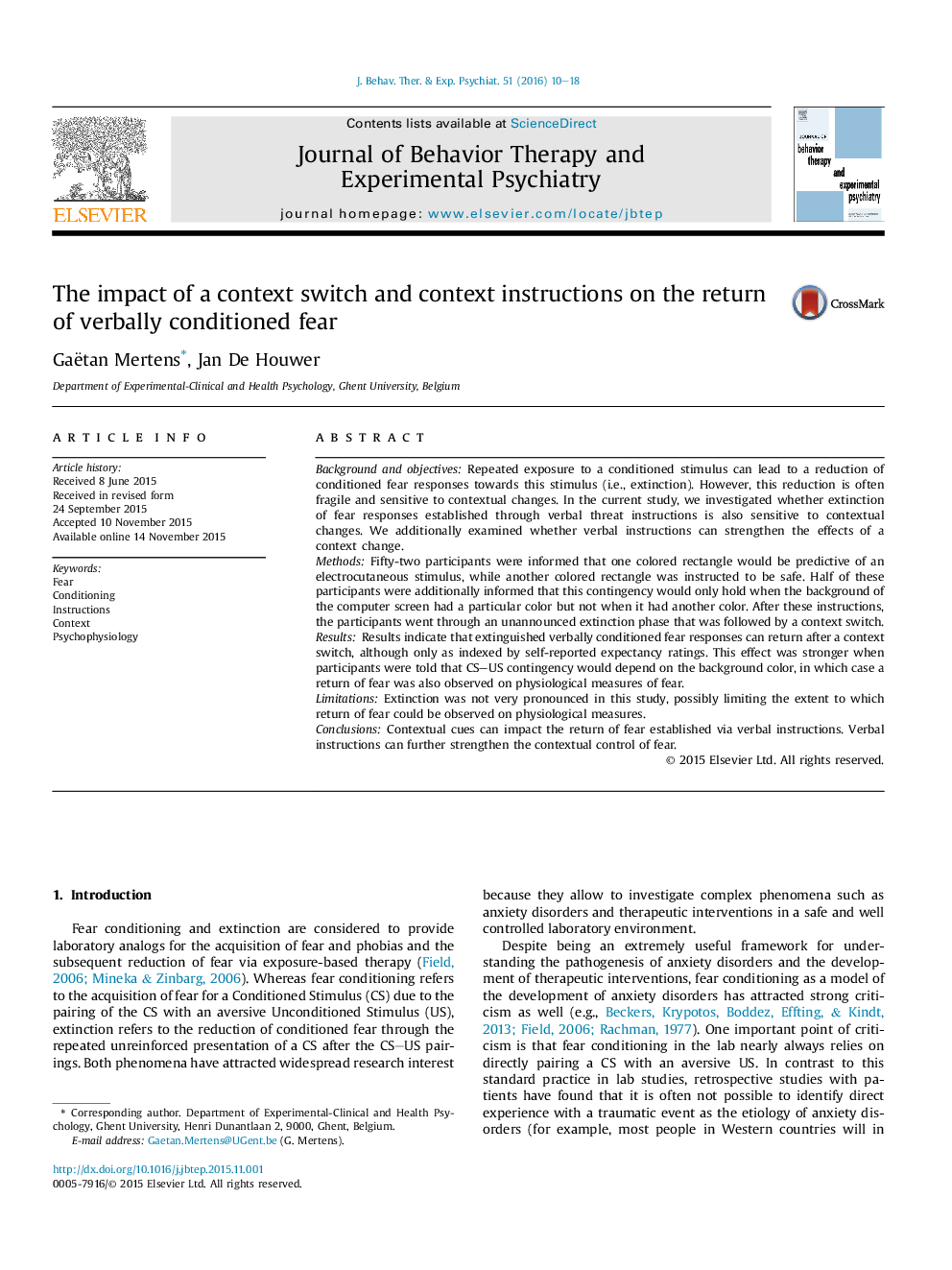| Article ID | Journal | Published Year | Pages | File Type |
|---|---|---|---|---|
| 910261 | Journal of Behavior Therapy and Experimental Psychiatry | 2016 | 9 Pages |
•Contextual cues determine the expression of conditioned fear after extinction.•This study investigated whether this also holds for verbally conditioned fear.•A context switch resulted in a return of verbally conditioned fear after extinction.•This effect was stronger when explicit instructions about the context were provided.•These context switch effects were not explained by context conditioning.
Background and objectivesRepeated exposure to a conditioned stimulus can lead to a reduction of conditioned fear responses towards this stimulus (i.e., extinction). However, this reduction is often fragile and sensitive to contextual changes. In the current study, we investigated whether extinction of fear responses established through verbal threat instructions is also sensitive to contextual changes. We additionally examined whether verbal instructions can strengthen the effects of a context change.MethodsFifty-two participants were informed that one colored rectangle would be predictive of an electrocutaneous stimulus, while another colored rectangle was instructed to be safe. Half of these participants were additionally informed that this contingency would only hold when the background of the computer screen had a particular color but not when it had another color. After these instructions, the participants went through an unannounced extinction phase that was followed by a context switch.ResultsResults indicate that extinguished verbally conditioned fear responses can return after a context switch, although only as indexed by self-reported expectancy ratings. This effect was stronger when participants were told that CS–US contingency would depend on the background color, in which case a return of fear was also observed on physiological measures of fear.LimitationsExtinction was not very pronounced in this study, possibly limiting the extent to which return of fear could be observed on physiological measures.ConclusionsContextual cues can impact the return of fear established via verbal instructions. Verbal instructions can further strengthen the contextual control of fear.
